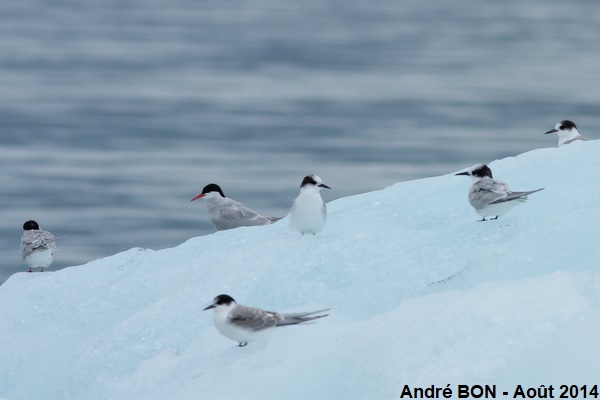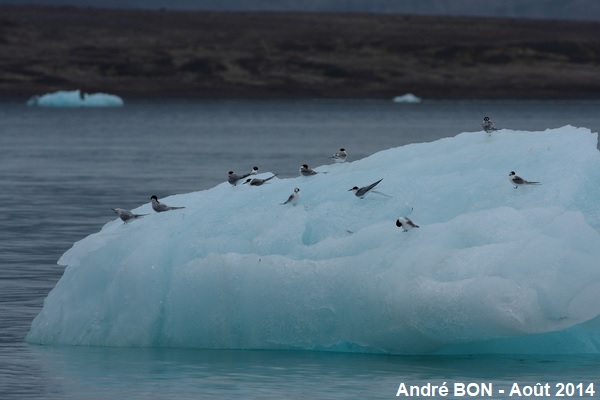

| Arctic Tern (Sterna paradisaea (Pontoppidan, 1763)) |


|
|
Scientific name: Sterna paradisaea (Pontoppidan, 1763) Common name: Arctic Tern French name: Sterne arctique Order: Charadriiformes Family: Laridae Size: Body size: 33 to 36 cm; Weight: 85 to 130 g; Wingspan: 76 to 85 cm. Habitat: Coastal areas, rocky islands. Food: Small fishes caught after a vertical dive, some small crustaceans. Nesting: Arctic Terns nest in colonies on the ground, letting several meters between nests. There are 1 to 3 eggs per clutch, often 2. Migration: Artic Terns migrate on very long distances from the northern regions of the northern hemisphere to southern Africa, Australia or Antarctica. Arctic tern are in winter plumage during the austral summer. Geographic area: Northern parts of Eurasia and America, around the North Pole. |
During the nuptial period the Arctic Tern shows a grey plumage on the upper parts with a black cap and a black nape. The bill is bright red without any black tip. The legs are red and very short. In the internuptial period, the bill turns to black, the forehead and the underside turn to white. The main risk of confusion is with the Common Tern (Sterna hirundo) which shows a shorter tail and a black-tipped bill. In flight, the Arctic Tern's neck is much shorter, the head appears close to the wings. |
| [To know more about the Arctic Tern] [Next picture] [Top] |

|
The period of my holidays in Iceland was a little too late in the year to observe Arctic Terns. Late August almost all Terns had already started their long migration towards the southern hemisphere. I have only observed two Tern in flight in Reykjavík and this small population on the beautiful glacial lake of Jökulsárlón. |
| [To know more about the Arctic Tern] [Previous picture] [Top] |

|
There were a dozen birds there, a few adults surrounded by juveniles. Is it a late clutch which will migrate after the main group? |